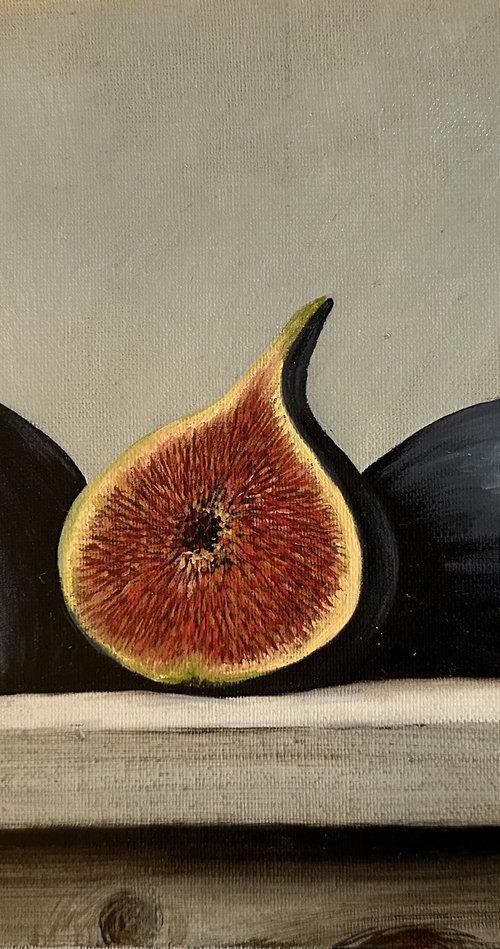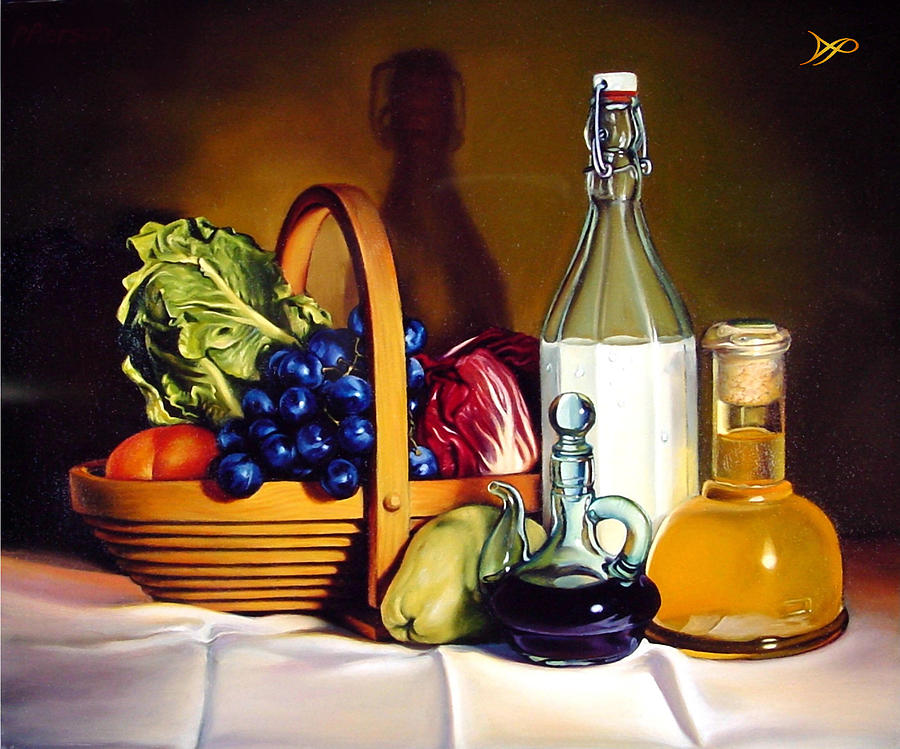Checking out Everything About Oil Paintings: A Guide to Understanding Their Elegance and Worth
Oil paints have mesmerized audiences for centuries, offering a glimpse right into the creative mastery of numerous ages. Their rich history is intertwined with innovative techniques and extensive emotional expression. Understanding the products and techniques behind these artworks can boost appreciation. Furthermore, the market for oil paints provides chances for collection agencies and capitalists alike. As one explores this fascinating world, the question occurs: what makes an oil paint genuinely beneficial?
The Background of Oil Paint: A Journey With Time
Oil painting has origins that date back to ancient times, it genuinely flourished during the Renaissance, when musicians discovered its flexibility and abundant color possibility. Early examples can be mapped to the 7th century, with strategies advancing notably throughout societies. The tool became famous in Northern Europe in the 15th century, specifically through the jobs of musicians like Jan van Eyck, who originated its usage for comprehensive realism and vivid tones. This period noted a departure from tempera paints, permitting greater deepness and appearance. As oil paint spread, it influenced many musicians, leading to masterpieces by prominent numbers such as Leonardo da Vinci and Rembrandt. The medium's tradition proceeds, forming the art globe well into modern-day times.
Recognizing Oil Paints: Materials and Techniques
As musicians explore the world of oil paints, they come across a varied selection of materials and techniques that define this medium. The main elements of oil paint consist of pigments, which offer color, and drying oils, such as linseed, that bind the pigments and assist in application. Numerous ingredients can modify the paint's structure and drying time, improving convenience. Strategies like glazing, where clear layers are accumulated, and impasto, which involves applying thick paint, permit different visual effects. Additionally, the usage of brushes, scheme blades, and also fingers can produce special textures and surfaces. Recognizing these products and methods allows artists to fully express their creative thinking and attain the wanted effect in their artwork.
The Function of Shade in Oil Paints
Color plays a crucial role in oil paints, influencing both aesthetic charm and emotional resonance. Recognizing color concept essentials, including the partnerships between tones, can improve an artist's capability to communicate mood and environment. Additionally, grasping color mixing strategies permits greater deepness and splendor in a painting's scheme.

Color Concept Essential
Comprehending color concept is crucial for musicians collaborating with oil paints, as it creates the foundation for creating harmonious and visually interesting make-ups. Color concept includes the study of just how colors communicate, the shade wheel, and the connections between main, secondary, and tertiary shades. Musicians use complementary colors to enhance contrasts and develop centerpieces, while similar colors advertise unity and cohesiveness within an item. Additionally, the principles of cool and cozy colors affect the understanding of deepness and room in a painting. Grasping these concepts allows musicians to manipulate shade efficiently, leading the customer's eye and communicating their desired message. Mastery of shade theory inevitably enriches a musician's ability to communicate feelings and ideas via their work.
Psychological Impact of Shade
The emotional effect of shade in oil paintings plays a critical function in just how viewers view and attach with artwork. Shades stimulate specific feelings and moods, affecting the customer's psychological state. Cozy hues like oranges and reds can create a feeling of warmth and power, while trendy tones such as blues and greens frequently evoke calmness or introspection. Artists tactically choose shade palettes to improve narrative elements, assisting the target market's psychological journey. The saturation and contrast of colors further amplify these effects, drawing attention and producing focus. Inevitably, the interaction of colors in oil paintings not just boosts their visual charm but also acts as an effective tool for emotional expression, enriching the visitor's experience and analysis.
Color Mixing Techniques
While several facets of oil painting contribute to the total structure, mastering color mixing strategies is vital for accomplishing preferred impacts and deepness. Shade mixing can be come close to via numerous techniques, consisting of the subtractive and additive procedures. Additive blending includes incorporating shades of light, while subtractive mixing relies upon pigments, where colors mix to produce brand-new shades. Artists often make use of a limited combination to create harmonious works, understanding the connections in between key, second, and tertiary shades. Strategies such as glazing and scumbling further improve deepness and luminance. By masterfully blending shades, an artist can stimulate emotions, develop centerpieces, and accomplish a sense of realistic look, ultimately raising the paint's aesthetic and psychological effect.
Famous Oil Painters and Their Iconic Works

Renowned for their mastery of shade and method, oil painters have developed some of the most well known artworks in history. Distinguished artists like Vincent van Gogh captivated audiences with his emotive brushwork in "Starry Evening," while Claude Monet's "Perception, Sunrise" laid the foundation for Impressionism. Leonardo da Vinci's "Mona Lisa" stays a long-lasting symbol of creative brilliant, showcasing his skill in capturing human expression. Meanwhile, Rembrandt's "The Evening Watch" shows his cutting-edge use light and shadow. Other noteworthy figures include Pablo Picasso, who reinvented modern-day art with his strong experimentation in works like "Les Demoiselles d'Avignon," and Georgia O'Keeffe, whose vibrant depictions of landscapes and flowers aided define American innovation. Each musician's one-of-a-kind design contributed significantly to the oil paint landscape.
Exactly how to Examine the High Quality of an Oil Painting
Evaluating the quality of an oil paint involves a careful evaluation of workmanship methods, along with an evaluation of shade and structure. Observing brushwork, layering, and the application of paint can disclose the musician's skill degree. Furthermore, the interplay of colors and the general plan of aspects add significantly to the painting's aesthetic worth.
Examining Craftsmanship Methods
A careful analysis of craftsmanship techniques is essential for determining the quality of an oil paint. Critics should first check out the application of paint; thick, distinctive brushstrokes might recommend a knowledgeable hand, while extremely uniform applications might suggest a lack of depth. oil paintings for sale. The layering method is additionally vital; the presence of lusters and varied thickness can improve luminance and intricacy. In addition, the quality of the products used, such as the canvas and pigments, plays a substantial role in resilience and overall aesthetic. Attention to detail in elements like sides and changes in between colors mirrors the artist's commitment to their craft. Ultimately, these strategies add to the paint's psychological impact and market price, working as indicators of the artist's ability and intent
Analyzing Color and Structure
While reviewing the top quality of an oil paint, one must concentrate on more info the interaction of shade and make-up, as these aspects are essential to the artwork's overall effect. Color selections can evoke emotions and establish state of mind; for that reason, the artist's palette must be analyzed for harmony and contrast. A healthy composition directs the visitor's eye and produces a feeling of unity. Artists often utilize strategies like the policy of thirds or leading lines to boost visual interest. Additionally, using light and shadow can include deepness, enhancing the three-dimensionality of the paint. Inevitably, an effective oil paint marries color and make-up, involving the audience and welcoming a much deeper admiration of the artist's vision and technique.
Taking care of and Preserving Oil Paintings
Proper care and preservation of oil paintings is necessary for maintaining their honesty and durability. To safeguard these art work, it is crucial to display them away from direct sunlight, which can create fading and discoloration. Maintaining a secure atmosphere with controlled temperature and humidity additional aids in preventing damages. Cleaning up need to be done carefully making use of a soft, completely dry fabric, avoiding any type of harsh chemicals that might harm the paint or varnish. Regular inspections for indicators of degeneration, such as cracking or flaking, are advisable. When delivering or saving oil paints, proper extra padding and framework are necessary to avoid physical damage. Ultimately, persistent care adds to the visual allure and value of oil paints with time.
The Marketplace for Oil Paints: Investing and gathering
Understanding the market dynamics for oil paintings is important for financiers and collection agencies alike. The worth of these art work is affected by various variables, consisting of the musician's reputation, historic significance, and current trends. Collection agencies usually seek items that resonate directly while considering possible admiration in worth. Auctions and galleries serve as main venues for trading, with prices changing based on demand and rarity. Purchasing oil paintings requires study into the marketplace, as well as an understanding of credibility and provenance. In addition, arising musicians may use possibilities for significant returns, while established names can command high prices. In general, a calculated method to accumulating can generate both aesthetic satisfaction and monetary benefits.

Frequently Asked Questions
What Are the Ecological Effects of Oil Painting Products?
The environmental effects of oil painting products consist of the launch of unpredictable natural substances (VOCs), harmful waste generation, and resource extraction for pigments. These elements add to pollution and eco-friendly destruction, raising problems amongst ecologically conscious musicians and customers.
Just How Do Different Canvases Affect Oil Painting Outcomes?
Various canvases influence oil paint results substantially. Appearance, surface area, and absorbency top quality can change paint application, drying out times, and shade vibrancy. Artists frequently select particular canvases to attain preferred results and enhance their imaginative expression.
Can Oil Paintings Be Restored if Damaged?
If damaged, Oil paints can without a doubt be recovered. Professional conservators utilize different methods to fix rips, tidy surfaces, and address staining, ensuring that the artwork keeps its original charm and value for future generations.
What Are the Indications of an Original Oil Paint?
The indications of an original oil paint include noticeable brush strokes, texture variants, and an unequal canvas weave (oil paintings for sale). Additionally, credibility might be validated with provenance, signatures, and the existence of a varnish layer unique to oil tools
How Has Technology Influenced Modern Oil Paint Techniques?
Technology has actually greatly affected modern oil paint techniques by presenting electronic devices for planning, boosted products for appearance and longevity, and on-line platforms for selling and sharing art, consequently broadening musicians' innovative possibilities and audience get to. Oil painting has roots that date back to old times, it truly grew throughout the Renaissance, when artists found its convenience and rich color possibility. The emotional effect of shade in oil paints plays a vital role in how customers link and view with art work. While many elements of oil painting add to the total make-up, mastering color mixing methods is crucial for achieving desired impacts and depth. Examining the top quality of an oil paint involves a careful assessment of craftsmanship methods, as well as an evaluation of color and structure. While reviewing the quality of an oil painting, one should focus on the interplay of color and structure, as these aspects are essential to the artwork's general effect.